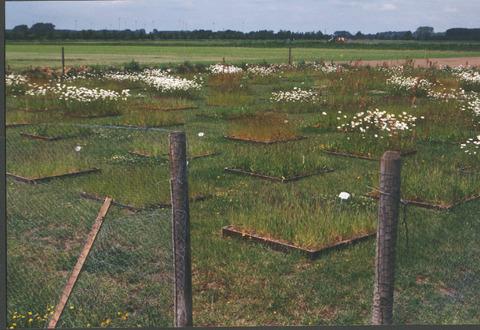Our official English website, www.x-mol.net, welcomes your feedback! (Note: you will need to create a separate account there.)
Do soil‐borne fungal pathogens mediate plant diversity–productivity relationships? Evidence and future opportunities
Journal of Ecology ( IF 5.5 ) Pub Date : 2020-03-13 , DOI: 10.1111/1365-2745.13388 Jasper Ruijven 1 , Eline Ampt 1 , Davide Francioli 1 , Liesje Mommer 1
中文翻译:

土壤传播的真菌病原体是否介导植物多样性与生产力的关系?证据和未来机会
更新日期:2020-03-13
Journal of Ecology ( IF 5.5 ) Pub Date : 2020-03-13 , DOI: 10.1111/1365-2745.13388 Jasper Ruijven 1 , Eline Ampt 1 , Davide Francioli 1 , Liesje Mommer 1
Affiliation

|
- From the establishment of the first biodiversity experiments in the 1990s, studies have consistently reported positive relationships between plant diversity and productivity in grasslands. However, the predominant hypotheses that may explain this pattern have changed. Initially, there was a strong focus on plant–plant interactions such as facilitation and resource partitioning, but the results from the first experiments that manipulated soil communities have led to a paradigm shift.
- In the current view on mechanisms that drive plant diversity–productivity relationships, fungal pathogen‐induced reductions of plant productivity at low diversity play an important role. This role rests on two assumptions: the effects of pathogens (a) are plant‐species specific (i.e. not all plant species are affected equally by a fungal pathogen) and (b) display negative density dependence (i.e. decrease with decreasing host plant density and hence, with increasing plant species richness).
- Here, we review the empirical evidence for these two assumptions. In the biodiversity literature, this is mainly based on indirect approaches, such as soil sterilization, plant–soil feedback studies and plant biomass patterns. The identification and functional characterization of the fungal pathogens that actually drive the plant diversity–productivity relationship have only recently started.
- Synthesis. Nevertheless, these studies, together with studies on plant–pathogen interactions in agricultural crops and forests, clearly suggest host‐specific, negative density‐dependent effects of fungal pathogens are common. Moreover, recent studies suggest that the reduced impact of pathogens at high plant diversity depends not just on host density but also on effects of neighbouring (non‐host) plant species on the pathogen. Understanding how neighbouring plants affect the interactions between a pathogen and its host plants and disentangling the role of plant–pathogen interactions from other mechanisms potentially driving diversity–productivity relationships are important future challenges.
中文翻译:

土壤传播的真菌病原体是否介导植物多样性与生产力的关系?证据和未来机会
- 从1990年代首次建立生物多样性实验开始,研究一直在报告植物多样性与草原生产力之间的积极关系。但是,可以解释这种模式的主要假设已经改变。最初,人们非常关注植物与植物之间的相互作用,例如促进和资源分配,但是最初的操纵土壤群落的实验结果导致了范式的转变。
- 在当前驱动植物多样性与生产力关系的机制上,真菌病原体引起的低多样性下植物生产力的降低起着重要的作用。该作用基于两个假设:病原体的影响(a)是植物物种特有的(即,并非所有植物物种都受到真菌病原体的同等影响),并且(b)表现出负的密度依赖性(即,随着寄主植物密度的降低而降低)。因此,随着植物物种丰富度的增加)。
- 在这里,我们回顾了这两个假设的经验证据。在生物多样性文献中,这主要基于间接方法,例如土壤灭菌,植物-土壤反馈研究和植物生物量模式。真正驱动植物多样性与生产力关系的真菌病原体的鉴定和功能表征才刚刚开始。
- 综合。然而,这些研究以及对农作物和森林中植物与病原体相互作用的研究清楚地表明,真菌病原体具有宿主特异性,负密度依赖性的效应是常见的。此外,最近的研究表明,病原体对高植物多样性的影响降低不仅取决于寄主密度,还取决于邻近(非寄主)植物物种对病原体的影响。理解邻近植物如何影响病原体与其宿主植物之间的相互作用,以及将植物与病原体之间的相互作用与可能驱动多样性与生产力关系的其他机制区分开来,是未来的重要挑战。

























 京公网安备 11010802027423号
京公网安备 11010802027423号